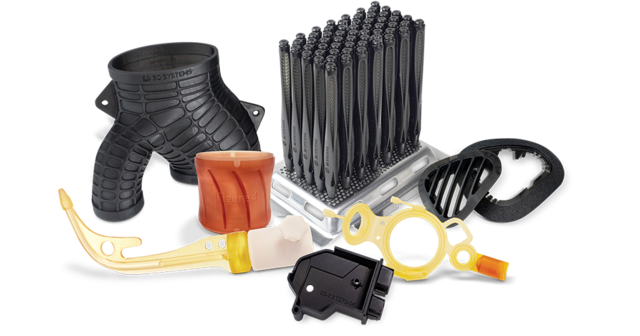Data-Driven: How Figure 4 Production Materials Are Different : 3D Systems
By Marty Johnson, Technical Fellow, 3D Systems
My work involves a lot of problem-solving, and a big problem I am tackling right now is dismantling many of the common misconceptions about the capabilities of additive manufacturing. My background is in mechanical engineering, and I’ve done a lot of work with injection mold tools and different plastics, so my vision for the future of additive manufacturing is shaped by my experiences in those areas. For the past several years I have been part of the core team that developed 3D Systems’ Figure 4 platform. In bringing this solution to market, our team overhauled print speed, accuracy, and cost to provide a machine architecture and print process that rivals traditional processes.
Marty Johnson, Technical Fellow at 3D Systems
That was step one.
Step two is ongoing and revolves around materials. Many once-valid opinions about additive materials are now myths. Figure 4 production-grade materials raise the bar for the entire 3D printing industry and break the pattern and expectation that additive materials are brittle with short-lived material properties. I’ve helped lead the exhaustive testing we’ve done on these materials, and have been a primary point of contact for our customer testers to hear how their applications are holding up. Their experiences validate my observations, which is that additive manufacturing is turning the corner to enable true, direct production, and Figure 4 is leading the pack.
How 3D Systems has tested Figure 4 production-grade materials
Selecting a material for production is a big deal. Winning an engineer’s confidence in this decision requires the right material properties, performance, and testing standards. We recognize that at 3D Systems, which is why we have adapted our approach to material testing and documentation to provide our users not only with our assessment but with extensive amounts of data for them to conduct their own assessment as well. This is important because it is ultimately up to the application and the design engineer to determine if a given material will work. Our goal is therefore to remove as many hurdles as possible to help our users and their applications succeed.
To ensure data integrity, all of our Figure 4 production materials data is tested and conditioned per ASTM and ISO requirements. Our new Figure 4 production materials datasheets include clear and separate reports as relevant on the following measures:
- Mechanical, thermal, and electrical properties (including flammability, dielectric properties, and 24-hour water absorption);
- Isotropic properties;
- Long-term indoor and outdoor environmental stability;
- Chemical and automotive fluid compatibility;
- Biocompatibility.

New production materials datasheets for Figure 4
Certain performance indicators will matter more to your application than others. To make our production materials datasheets as accessible as possible, we have provided comprehensive information in a consistent format that is quick to navigate. Our new Figure 4 materials data sheets are designed to provide you with all the information you will need to get started matching your application to a production process.
For a quick look, we also created an ebook that provides an overview of our complete Figure 4 materials portfolio. In addition to some top-line considerations and features for each material, the ebook provides guidance on how to assess additive materials, and what you should be looking for. One major point that is included in the ebook, and which is worth highlighting here, is that Figure 4 parts have isotropic properties. We’ve done the testing and documented the results, and this is a big deal for throughput because part orientation doesn’t change part strength, enabling far greater capacity.
From the direct feedback and input I’ve received from customers, the response to these materials and material data sets couldn’t be better. Figure 4 is a true production solution: the machine architecture is great, the capability to go from prototyping to production on the same machine is what the manufacturing world has been asking for, and now Figure 4 material capabilities open up new applications for direct digital production.
At 3D Systems, we want you to innovate. I am really happy with the progress we have made in removing friction from the process of trying new things and solving problems differently and better. I’m excited about where 3D Systems is as a company and industry leader, and I’m even more excited about where you’ll go with our solutions.
This content was originally published on the 3D Systems.

